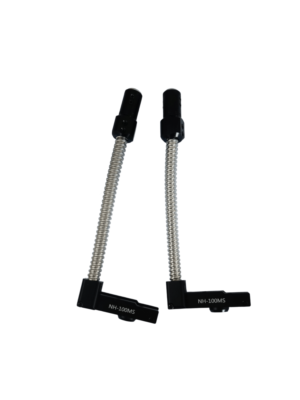
Axxon Dispenser NH-50 Nozzle Heater Origin New Valve APJ1500
Axxon Dispenser NH-50 is a highly specialized tool used in the electronics manufacturing and semiconductor industries .

At the heart of the Axxon Dispenser NH-50 is the ability to precisely control the amount and placement of material being dispensed. Whether it’s an adhesive, coating, or other specialized compound, maintaining uniformity in the dispensing process is essential to ensure that components are assembled correctly and function reliably. The NH-50 nozzle heater helps maintain the optimal temperature of the material being dispensed, ensuring that its viscosity remains stable throughout the process. This is especially important when working with materials that are sensitive to temperature fluctuations, which could otherwise lead to issues such as uneven application or air bubbles that could compromise the integrity of the final product.
2. Importance of the Axxon Dispenser NH-50 Nozzle Heater
One of the key components in this dispensing system is the NH-50 nozzle heater. As the name suggests, this heater ensures that the nozzle through which materials are dispensed is kept at the correct temperature throughout the process. This is crucial for several reasons:
- Viscosity Control: Many materials used in electronics manufacturing, such as epoxies, adhesives, and sealants, can change their viscosity with temperature. If the material cools too much, it can become too thick to dispense properly, leading to clogs or uneven application. On the other hand, if the material becomes too hot, it may flow too freely, resulting in over-dispensing and potential damage to delicate components. The NH-50 heater keeps the material within a precise temperature range to prevent these issues.
- Prevention of Clogging: Clogged nozzles are a common problem in dispensing systems, especially when working with materials that can solidify quickly. By maintaining a consistent temperature at the nozzle, the NH-50 heater reduces the risk of clogs, ensuring a smooth and uninterrupted dispensing process.
Axxon Dispenser NH-50 nozzle heater, coupled with the APJ1500 valve, represents a powerful combination of precision, efficiency, and control in the field of electronics manufacturing. These components work together to ensure that materials are dispensed consistently and accurately, helping manufacturers to produce high-quality products with minimal waste and downtime. As the demands of modern manufacturing continue to evolve, tools like the Axxon Mycronic Dispenser will play an increasingly important role in ensuring that production processes remain efficient, reliable, and adaptable to new challenges.








